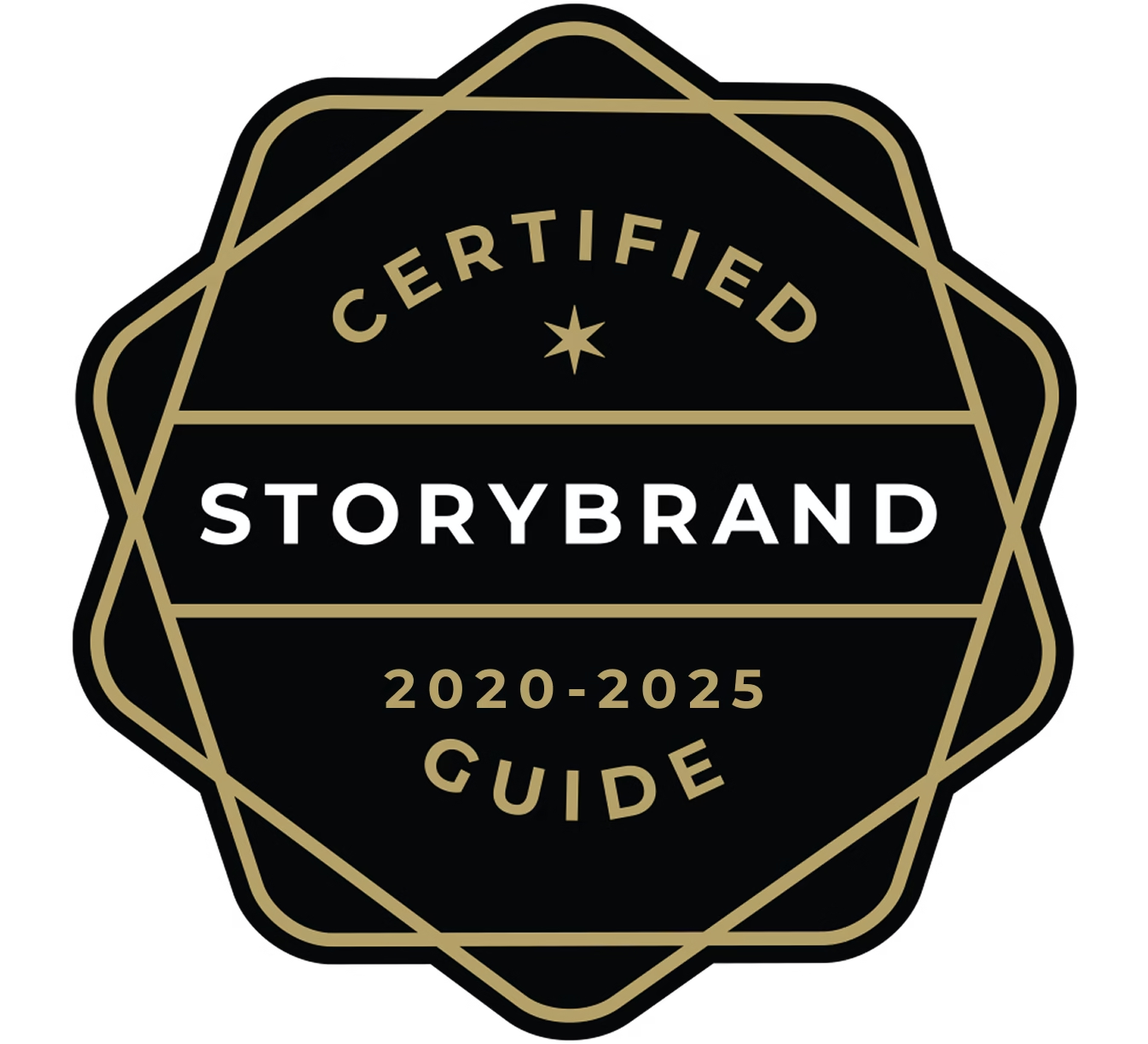If you’ve ever asked yourself, “How much should I spend on marketing?” you’re not alone. It’s one of the most common and critical questions for any business owner. Get the number wrong, and you’re either leaving money on the table or throwing it away.
If you are wondering what is the marketing budget for your business, there’s no one-size-fits-all answer. Your marketing budget should be as unique as your business. Factors like your industry, revenue, growth goals, and customer acquisition costs all play a role.
But here’s the kicker: the proper marketing budget isn’t about spending more but smarter. At Straight4ward Consulting & Marketing, we’ve helped 350+ businesses slash wasted ad spending by 40% while doubling ROI.
So, how do you crack the code on your marketing spend? We break it into actionable steps backed by insights and proven strategies.
Why Guessing Your Marketing Budget is a Recipe for Disaster?
We’re being honest: Guesswork won’t get you results.
Marketing is the lifeblood of growth. It drives brand awareness, fuels customer acquisition, and cultivates long-term loyalty. But you’re gambling with your success if you’re not strategic about your investment.
For example, did you know businesses that invest in the right marketing strategies see an average of $5.20 ROI for every $1 spent on Google Ads? Conversely, companies that don’t track or optimize their spending donate that money to tech giants like Google and Facebook.
Straight4ward Consulting & Marketing can help you avoid these traps. We combine data-driven insights with customized strategies to ensure every dollar drives results.
What Percentage of Revenue Should Be Spent on Marketing?

The most common answer is to spend 5-12% of your total revenue on marketing. But that’s just a starting point. The truth is, the percentage you allocate depends on factors like:
1. Your Business Stage: Are you a startup looking to scale or an established company maintaining growth? Startups often need to spend closer to 10-20% of their revenue to build brand awareness, while established companies may stick to 5-8% for steady growth.
2. Your Industry: E-commerce brands typically spend more on marketing (7-12%) than local businesses or service providers (5-10%). Meanwhile, SaaS companies can spend as much as 40% of their revenue on customer acquisition because their lifetime value (LTV) justifies it.
3. Your Goals: Are you focused on aggressive growth, entering a new market, or nurturing customer retention? Ambitious goals require a bigger budget.
See a quick example: Say you’re a $500,000/year business. If you’re in e-commerce and aiming for rapid growth, you might allocate 10% of revenue, or $50,000 annually, to marketing. But if you’re a local service provider with steady demand, 5% ($25,000) might do the trick.
The Goldilocks Formula: Finding Your “Just Right” Marketing Budget
Ditch the 5-12% Myth (It’s Dead)
Sure, “industry averages” are a starting point. But here’s the truth: Your SaaS startup is scaling in Miami ≠ to become a NYC bakery. Startups often allocate 20-40% of revenue to fuel growth, while established SMBs hover around 7-15%.
Pro Tip: Your budget should hurt a little. Growth demands investment. If it feels too comfortable, you’re playing small.
Three Proven Methods to Calculate Your Marketing Budget
If percentages feel too vague, here are three practical methods to zero in on your perfect number:
1. Revenue Percentage Method
This is the tried-and-true approach most businesses use. Start with your revenue, apply an industry benchmark (5-12%), and adjust based on your goals. For example:
- $1M annual revenue x 10%: $100,000 marketing budget.
- Add an extra 2-3% if you’re in a growth phase.
2. Goal-Driven Method
This method flips the script. Start with your revenue targets, figure out how many customers you need, and calculate the Customer Acquisition Cost (CAC). For instance:
- Goal: $500,000 in revenue.
- Average Sale: $5,000.
- New Customers Needed: 100.
- CAC: $500.
You’d need to spend $50,000 to hit your goal. Simple math, big clarity.
3. Competitor Analysis
Want to know what your competition is spending? Tools like SEMrush and SpyFu can give you a peek into their ad budgets and strategies. While you shouldn’t copy competitors blindly, understanding their spending can help you benchmark and refine your approach.
The Hidden Factors That Impact Your Marketing Budget

Here’s the secret most businesses overlook: Your marketing budget isn’t just about percentages. It’s about strategy.
- Customer Acquisition Cost (CAC): CAC varies wildly by industry. For example, the average CAC for SaaS is $205, while e-commerce can be as low as $30. Know your metrics so you can allocate efficiently.
- Seasonality: If you’re an e-commerce brand, expect to spend more during Q4 for the holiday rush. Businesses with seasonal spikes should plan accordingly.
- Testing and Optimization: Set aside 20% of your budget for marketing experiments like A/B testing, new ad platforms, or creative campaigns. This is how you find what works and avoid stagnation.
At Straight4ward Consulting & Marketing, we help clients balance these factors to build budgets that deliver results without guesswork.
What Are Businesses Like Yours Spending on Marketing?
Take a quick look at industry benchmarks for 2025:
E-commerce: 7-12% of revenue
E-commerce businesses are in a highly competitive landscape that requires robust marketing investment. Companies in this sector typically allocate between 7% and 12% of their total revenue to marketing efforts.
This budget often focuses on paid advertising campaigns, social media engagement, and influencer marketing strategies to drive traffic and conversions.
As consumers increasingly shop online, e-commerce brands must adapt by investing in targeted digital ads and optimizing their social media presence to effectively reach potential buyers.
Additionally, many e-commerce companies continually use data analytics to refine their campaigns, ensuring they maximize ROI.
SaaS: 15-40% of revenue
The stakes are even higher for software as a Service (SaaS) companies, with marketing budgets ranging from 15% to 40% of revenue. This substantial investment drives lead generation, promotes free trials, and nurtures customer relationships in a subscription-based model.
SaaS businesses often focus on content marketing, webinars, and targeted online ads to attract potential clients and convert them into loyal users. Given the competitive nature of the SaaS market, these companies must continually innovate their marketing strategies to stay ahead of emerging trends and customer expectations.
Local Services: 5-10% of revenue
Local service providers, such as plumbers, electricians, and beauticians, typically allocate 5% to 10% of their revenue to marketing.
Their strategies often prioritize hyper-local advertising, leveraging platforms like Google My Business and community-focused social media channels. SEO is crucial in their marketing mix, as local businesses aim to rank high in search results to attract nearby customers.
Additionally, many local service providers benefit from word-of-mouth referrals, so investing in customer satisfaction and community engagement is also essential for long-term success.
B2B Companies: 8-15% of revenue

Business-to-business (B2B) companies generally spend between 8% and 15% of their revenue on marketing. Their focus is often on LinkedIn ads, account-based marketing (ABM), and content marketing strategies that resonate with other businesses.
B2B marketers aim to position their brands as thought leaders by providing valuable content and insights and fostering relationships with potential clients. As the buying process in B2B becomes more complex, personalizing marketing efforts and utilizing data-driven strategies for lead nurturing is critical for success in this sector.
Where does your business fall? Being aware of these benchmarks allows you to assess how competitive your marketing budget should be. This ensures that you align your spending with industry standards while tailoring strategies to meet your specific goals.
How to Avoid Budget Blunders (and Maximize ROI)
Even with the correct numbers, many businesses stumble regarding execution. Here are five common mistakes and how to avoid them:
1. Sticking to Last Year’s Budget: Marketing evolves fast. What worked in 2024 might not work in 2025. Be flexible and adjust based on trends.
2. Neglecting Organic Channels: Paid ads are great, but don’t forget SEO, email, and content marketing. They’re cost-effective and build long-term traffic assets.
3. Focusing on Vanity Metrics: Impressions and clicks don’t pay the bills. Track metrics that move the needle, like CAC, LTV, and conversions.
4. Ignoring Retention Marketing: Acquiring new customers is expensive. Invest in loyalty programs, email campaigns, and customer support to keep them returning.
5. Failing to Test and Optimize: If you’re not testing, you’re wasting money. Dedicate part of your budget to A/B testing and refining your campaigns.
Straight4ward Consulting & Marketing specializes in building strategies that avoid these costly pitfalls. Let us show you how.
Your Marketing Budget is a Muscle, Train It Right
Here’s the bottom line: Your marketing budget isn’t just an expense; it’s an investment. And like any investment, it must be intentional, data-driven, and flexible.
Stop guessing. Start planning. Whether you’re a startup looking to make waves or an established business aiming to scale, knowing how much to spend on marketing is the first step toward sustainable growth.
Turn your marketing spend into a profit machine. Straight4ward Marketing is here to help. From budget planning to full-service digital strategies, we’ll ensure every dollar you spend drives results. Contact us today to build your custom marketing blueprint!
P.S. How do you scale your business online? Check out our guide on growing your business online. It’s packed with actionable tips to take your brand to the next level!
How Much Should You Actually Spend on Marketing?
If you’ve ever asked yourself, “How much should you spend on marketing?”, you’re not alone. It’s one of the most common, most critical questions any business owner can ask. And getting it wrong? That’s how you either leave money on the table or light your budget on fire.
There’s no one-size-fits-all answer. Your marketing budget should be as unique as your business. Think industry, revenue, growth goals, customer acquisition cost, all of it matters. But here’s the real kicker: It’s not about spending more. It’s about spending smarter.
At Straight4ward Consulting & Marketing, we’ve helped over 350 businesses slash wasted ad spend by 40% and double their ROI. Here’s how you can get strategic about your marketing budget, and start seeing real results.
Why Guessing Your Marketing Budget is a Bad Idea
Let’s be honest. Guessing doesn’t work. Marketing is how your business grows. It builds awareness, brings in leads, and keeps customers coming back. If you’re winging it, you’re risking everything.
Example? Businesses that invest in the right marketing strategies get an average of $5.20 return for every $1 they spend on Google Ads. But if you’re not tracking or optimizing? You’re basically donating money to tech giants.
What Percentage of Revenue Should Be Spent on Marketing?
The short answer? 5-12% of your revenue. But that’s just a starting point. The better question is: What do you want your marketing to do for you?
Here’s what actually impacts your budget:
- Business Stage: Startups need more firepower, 10-20% of revenue isn’t uncommon. Established companies can often cruise at 5-8%.
- Industry: E-commerce? You’re probably spending 7-12%. SaaS? Could be as high as 40% because of your LTV. Local service? More like 5-10%.
- Goals: Big growth, new markets, customer retention, all of those require more investment.
Quick example: You’re doing $500K a year. If you’re in e-commerce and trying to grow fast, plan on a $50K marketing budget. If you’re a local service with steady business, $25K could be more than enough.
The Goldilocks Formula for Your Budget
Forget the 5-12% rule for a second. Your business is not a statistic. A SaaS startup in Miami isn’t playing the same game as a NYC bakery.
Startups might put 20-40% of revenue into growth. SMBs? Closer to 7-15%. If your budget feels too safe, it’s probably too small. Growth should stretch you a bit.
Three Smart Ways to Set Your Marketing Budget
If percentages feel fuzzy, use one of these:
- Revenue Percentage Method
- Take your annual revenue and apply a range (start with 5-12%).
- If you’re growing fast, tack on a few more points.
- $1M revenue × 10% = $100K marketing budget.
- Take your annual revenue and apply a range (start with 5-12%).
- Goal-Driven Method
- Start with your revenue goal.
- Figure out how many customers you need and what it costs to get one.
- Example: $500K target / $5K per sale = 100 customers. CAC is $500 → $50K budget.
- Start with your revenue goal.
- Competitor Analysis
- Use tools like SEMrush or SpyFu to estimate your competitors’ spend.
- Don’t copy them, but benchmark your strategy.
- Use tools like SEMrush or SpyFu to estimate your competitors’ spend.
Hidden Factors That Shape Your Budget
- Customer Acquisition Cost (CAC): SaaS companies average $205 CAC. E-commerce? More like $30. Know your numbers.
- Seasonality: Retailers often ramp up spend during Q4. Plan for it.
- Testing: Set aside 15-20% of your budget for experiments. New creatives, new platforms, A/B testing, it all helps you grow smarter.
We help clients weigh these factors and build strategic, data-backed budgets that actually move the needle.
Industry Benchmarks for 2025
Here’s what businesses like yours are spending:
- E-commerce: 7-12% of revenue. Heavy focus on paid ads, influencer campaigns, and data-driven optimization.
- SaaS: 15-40%. Big investment in content, email funnels, and lead generation.
- Local Services: 5-10%. Focus on local SEO, community engagement, and referrals.
- B2B Companies: 8-15%. Emphasis on LinkedIn, content strategy, and ABM.
Knowing these benchmarks helps you stay competitive while still tailoring your strategy to your goals.
How to Avoid Budget Blunders
Even a perfect number won’t help if you blow it on the wrong things. Here’s what to avoid:
- Using Last Year’s Budget Without Adjusting: The market moves fast. Your budget should too.
- Ignoring Organic Channels: SEO and email marketing bring long-term returns. Don’t skip them.
- Chasing Vanity Metrics: Likes don’t pay the bills. Focus on CAC, LTV, and actual conversions.
- Neglecting Retention: It’s cheaper to keep a customer than to find a new one.
- Skipping Optimization: If you’re not testing, you’re guessing. And that gets expensive.
We’ve seen it all, and fixed it all. Straight4ward builds marketing plans that skip the guesswork and focus on ROI.
Treat Your Marketing Budget Like a Muscle
Your budget isn’t just a number, it’s your growth engine. And like any muscle, it gets stronger when you train it right.
Stop guessing. Start planning. Whether you’re scaling a startup or stabilizing an established brand, knowing how much to spend on marketing is step one. Making that money work for you? That’s where we come in.
At Straight4ward Consulting & Marketing, we turn budgets into strategies and strategies into profit. Ready to build your custom marketing blueprint?
Contact us today.
P.S. Want to scale online? Check out our guide to growing your business online, full of no-fluff, real-world strategies you can start using today.













